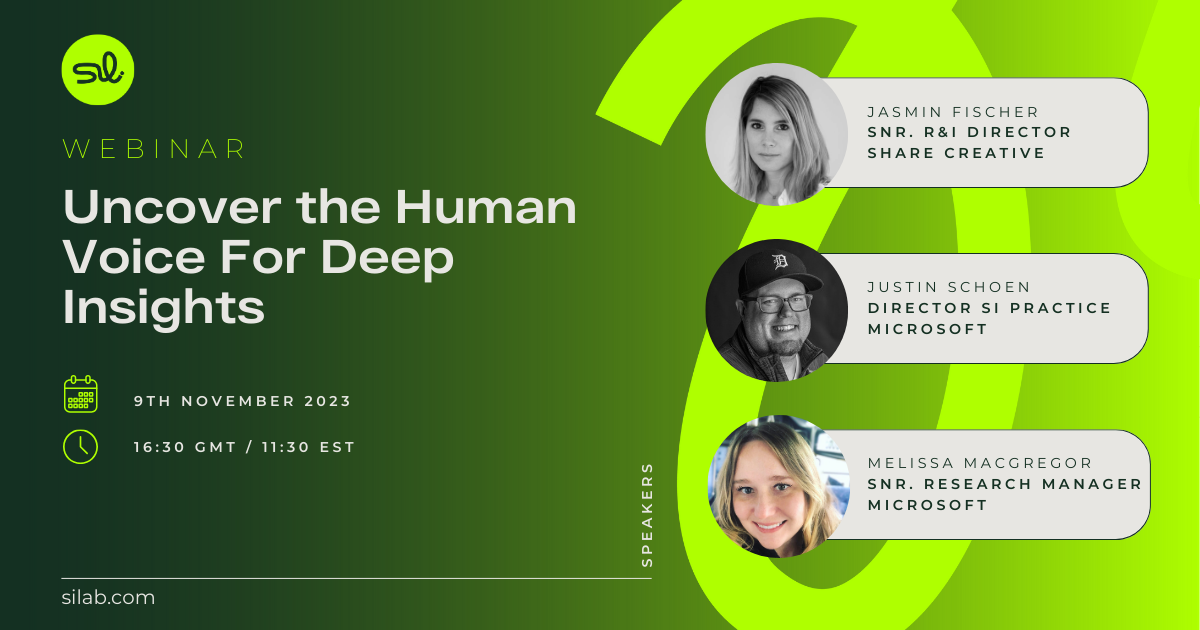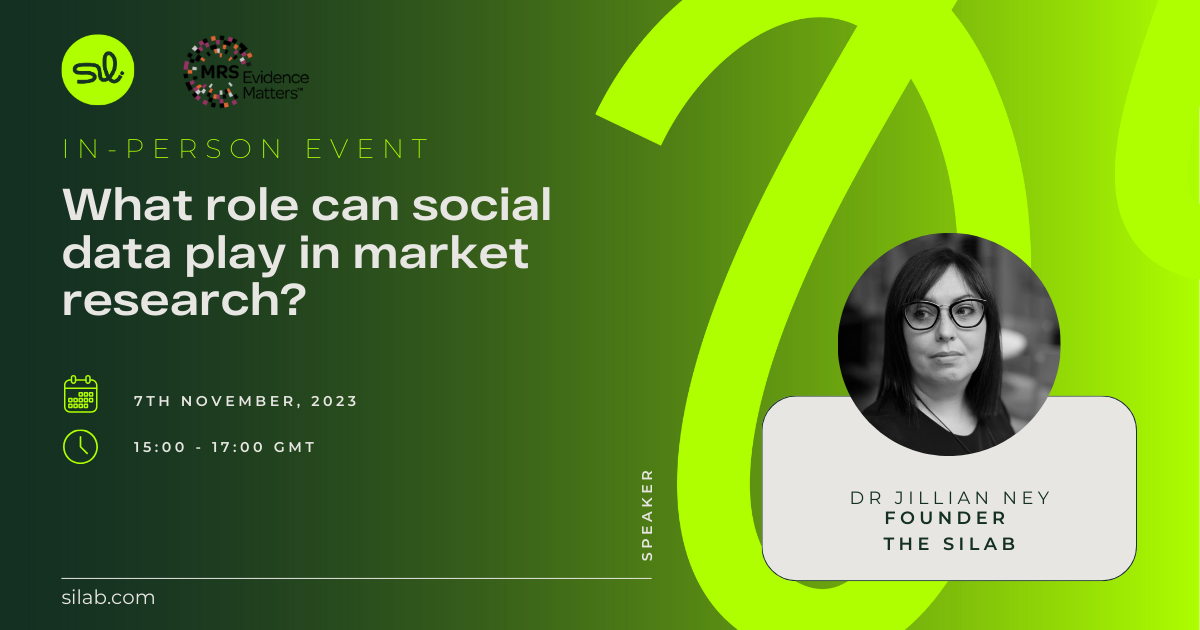
Social Listening 101: Social media sources and how to identify what to listen to
Anyone who’s ever set out to find a social listening tool will have quickly found an abundance of different options, with each platform promising the most sophisticated solution, cutting-edge features, all built on the latest technology. Another common selling point is the number of data sources, with many of the platforms emphasising their access to millions of blogs, forums, videos, news sites, review sites and social networks.
The common notion is that the bigger the data set, and the broader the set of sources, the richer and more valuable the findings will be. This assumption is something we often encounter when we introduce our social listening services to new stakeholders. And while it’s true that social data coverage is an important point to consider when conducting social listening, it’s equally important not to get fixated on the number of data sources alone.
Although it’s over ten years old, social listening as a consumer intelligence research method is still maturing. To many, the concept brings to mind Big Data and AI, but social listening is much more than fancy tech. Here at Convosphere, we often talk about the tools as an enabler. This means that, rather than being guided by technology, our listening activities are led by our client’s specific objectives. Meeting these objectives is not possible without flexibility, which is why we adapt our methodology where needed and don’t rely on a single social listening platform or approach.
In this post, we will talk about how an efficient and relevant social listening strategy is not built on the number of data sources or conversations captured, but on the analysts’ ability to find and listen to the voices that matter.
Qualitative vs quantitative social listening: Why bigger does not always equal better
While social media listening is often seen as a quantitative exercise, social media conversations offer significant potential for qualitative analysis. The approach you need to take will depend on your objective, but also on the quantity of data available.
Quantitative analysis is useful to understand the anatomy of conversations and seeing where and how the topic of interest is discussed on different platforms and, more importantly, by whom.
Qualitative analysis is a must when trying to ascertain the kind of language used, the experiences and emotions shared, and develop customer journeys. This is where the idea of qualitative analysis at scale comes into play if there is a sufficient body of conversations.
A small volume of conversations to analyse is not always the curse that quantitatively-minded analysts perceive. You can potentially glean more insights from a single relevant forum thread to the themes you are exploring than you would from thousands of posts. This is particularly true when analysing rare medical conditions in a pharmaceutical context where, although relevant conversations may be few, each post can offer a goldmine of insights to help companies better understand patients’ expectations, perceptions and unmet needs. Qualitative analysis is also paramount when it comes to conducting audience analysis, particularly when identifying personas or archetypes based on attitudes and needs, much like in a traditional research context where qualitative data collection methods would be used.

Efficient and relevant social media listening relies on identifying and listening to the right sources.
Finding the Conversations
The changing social media landscape
In recent years, new players have appeared in the world’s top social networking sites, with marketing experts citing TikTok and Clubhouse among the names to watch. Due to their immense popularity, these sites are often perceived as invaluable sources of consumer conversations.
At the same time established networks, including Facebook and Instagram, have limited access to user data for third parties. Driven by privacy concerns and new data regulations, this move has unfavourably influenced commissioners’ view of social media conversations as a source of consumer intelligence. After all, if the field of sources that can be listened to is shrinking, then surely the opportunity they provide to glean valuable business insights is diminishing too?
It’s a fair concern to raise. But this is where it’s important to remember that the key aspect of efficient and relevant social media listening is to listen to the voices that matter and that means knowing where these voices express themselves.
Social listening and Western bias
Linked to this is the assumption that your audience will speak on Western social media networks, such as Twitter, Facebook and Instagram, which results in homegrown networks and sources being discounted as data sources. But considering the popularity of many of these local channels and smaller-than-average networks, most listening strategies benefit from going beyond the usual social media giants when capturing data. In Japan, for example, social media users are active on forums, particularly Yahoo!. In South Korea, home-grown Kakao and Daum dominate the landscape. And don’t forget that China has a whole ecosystem of platforms that have influenced the development of its Western equivalents.
In short, the social media landscape is as complex as it is diverse. In order to know where to look, you need to know where your target audience is speaking and how it is using the different platforms. This is even more important when conducting multilingual social listening, since excluding local social networks will skew the data, directly impacting the opportunity to garner meaningful insights.

Analysts need to know the social media landscape and keep abreast of which audiences use which networks.
Key Tips
How to know where and how to look:
First, you will need to take into account the cultural differences and local use of social media networks and sites in the country where you are conducting listening, ideally through the use of in-market and native analysts. Many global projects overlook this part, resulting in crucial information being missed when attempting to compare consumer behaviours between countries.The local use of social media platforms will impact who has a voice and what is shared, so pinning down these differences should be an inherent part of the research process to derive cultural insights.
Much like real-life communities, social media and online communities have their own language. In looking for relevant conversations, you will need to grasp that language. This encompasses not only words but also signs, symbols and semiotics. The language used is also a key source of audience insights in terms of persona profiling.
Last but not least, you will need to target the most relevant and insightful conversations for your objectives. Cutting through the noise is one of the most challenging aspects of social media intelligence. While significant technological progress has made it easier to detect the signal in the noise, relevance still remains a question of assessing content against the audience and what you are trying to find out about it
Dos and dont's to consider before you start your next social listening project:
- Know the social media landscape and keep abreast of which audiences use which networks. This knowledge comes from regular analysis of a market and by consulting published sources.
- Work with native social media analysts with in-depth cultural knowledge and insights into the markets you are studying.
- Don’t be afraid to discard social media content that isn’t relevant to your research objectives. They will only serve to cloud the results and make it more cumbersome to identify the findings that matter.
- Consider the benefits of combining quantitative and qualitative analysis to make the most of the dataset.
- Always keep your research objectives front and centre as they will guide your approach and ensure you deliver the right depth of insight.
Further reading
To further explore the best use of tools and technology, we recommend taking a look at the following:
- This article on The Social Intelligence Lab, which explains the perils of letting technology and tools lead your social listening strategy and analysis activities.
- This webinar by Convosphere’s Jackie Cuyvers, in which she explores the nuances of social listening tools to help you understand what really matters before you decide on which social listening platform is the best for your business needs.
This article was originally posted on the Convosphere website
This interview was recorded via LinkedIn Live, if you prefer to view on LinkedIn, click the button below.
View InterviewSee related content









